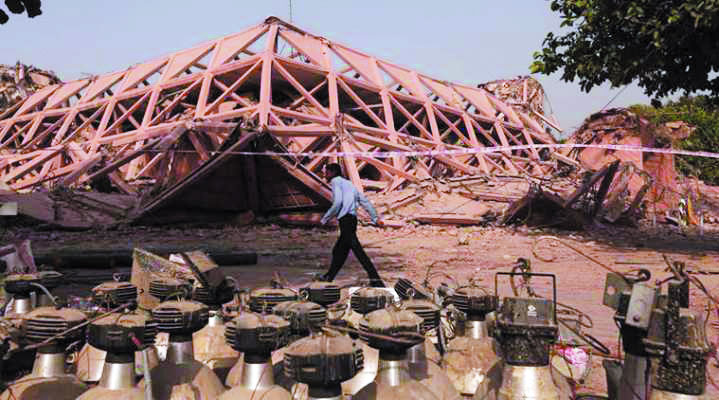The demolition of the architecture at the India International Trade Fair venue at Pragati Maidan, besides being a huge mistake, only reveals our shameful attitude.
To kill the goose that lays the golden eggs is what the nodal agency of the India Trade Promotion Organisation, working under the administrative control of the Commerce Ministry, has successfully done, when it decided to dismantle the India International Trade Fair (IIFT) venue at Pragati Maidan.
The mindless demolition followed by reconstruction has not only destroyed an iconic platform by reducing its size to one-fourth but robbed one of the melting pots of Delhi, where all the major Indian States once showcased their produce beside their social and cultural heritage, including some interesting facets not usually known to the common public.
It was a little India of sorts, be it the dangling masks made of colourful materials in front of the Kerala pavilion, the canvas of beautiful women picking tea leaves of Assam, the iconic Taj Mahal prototype in front of the hall representing Uttar Pradesh and so on. Much before the digital revolution, each state was panned through graphic charts. Even we saw locals and tribals reaching out to the audience with their craftsmanship.
The visitors would queue up in front of the stalls for trying out the delicacies of each State at an affordable price. Makki ki roti and sarson ka saag in Punjab, south Indian idli, dosa, the mouth-watering Rajasthani cuisine, among others, were crowd-pullers. I clearly remember how the families kept visiting the fair repeatedly just for the food. Many a time the artisans would sell their material at a much cheaper rate than the open market price. People would wait for Nehru’s birth anniversary on November 14 to mark the opening of the fair. All this was possible because each State was given enough space to spread out its wares and ethos. There were benches to lounge around in an open neighbourhood style and enough clean water to drink.
The biggest casualty was the iconic structure, the Hall of Nations, which was a very big attraction for tourists. It was widely publicised that in building that pavilion, thousands of tonnes of steel bars were used. The architect was highly praised and honoured by the national media. There was news about several letters and appeals from the public, architects and several Indian and international institutions against razing the iconic structure to the ground.
Despite this widespread condemnation, somehow nothing could be changed. Given the area for the fair has been halved, basic facilities like safe drinking water are also lacking. States who were earning huge profits are suffering losses; their sales have dipped substantially. A big population has been robbed of their regular earnings, which used to be an annual feature for them. Neither the public, nor the participating States are happy with the present squeezed layout. The number of tourists, both domestic and some foreigners, has dipped with high disappointment. The variety of artefacts, specific to different States, was once main attractions. These are now a thing of the past.
Demolition and reconstruction of such a gigantic magnitude have come as a double whammy amid the rising levels of pollution. Construction debris lying all over and dust mixed with air are causing particulate matter to rise, fuelling one of the major health hazards in the city.
It has been widely acclaimed that the scale of construction activity taking place in Delhi and NCR is now becoming the biggest source of pollution in the area. Some stringent laws should be enforced to check the mindless demolition and construction activities. The National Green Tribunal (NGT) should be empowered to study and evaluate the pros and cons before allowing any such project to take off.
Writer: Manjula Pal
Courtesy: The Pioneer








 OpinionExpress.In
OpinionExpress.In















Comments (0)